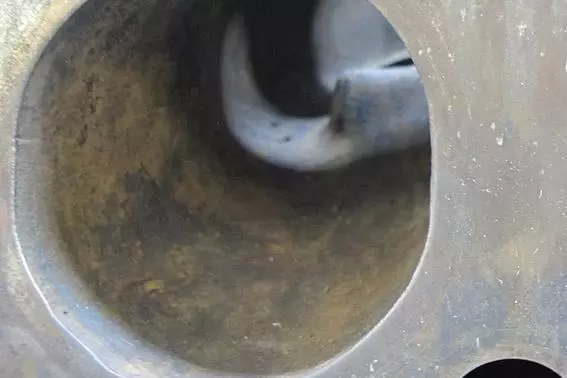Ultrasonic Cleaning Cylinder Heads (Engine)
Ultrasonic cleaning is a highly effective process for removing contaminants from metal components such as cylinder heads and valves. This process uses high-frequency sound waves to create microscopic bubbles in a cleaning fluid. When these bubbles collapse, they generate intense shock waves that effectively scrub the surface of the component, removing any contaminants that are present.
The customer's criterion for cleaning cylinder heads and valves is to be free from all contamination. In this case, the components are made of steel and cast iron and have been contaminated with landfill gas residue. To meet this criterion, an ultrasonic cleaner is used along with a cleaning fluid, MI80 cleaner, and Optical 2010. The process involves controlling the temperature and concentration of the cleaning fluid to achieve optimal results.
Customers Criteria: Free from all contamination
Material: Steel, cast iron
Component: Cylinder head, valve
Contamination prior to cleaning: Landfill gas residue
| Ultrasonic Cleaner | Cleaning Fluid | Temperature(s) | Concentration |
|---|---|---|---|
| MI80 cleaner | Optical 2010 | 70°C | 125G per Litre |
Process for removing landfill gas residue:
To begin the cleaning process, the MI80 cleaner is filled 'Optical 2010' cleaning fluid. The cleaner is then degassed for 20 minutes and allowed to heat up to 70°C. Once the desired temperature is reached, the cylinder head is loaded into the basket and submerged into the tank. The contamination on this particular cylinder head is very heavy. The head is checked after each 60 minute cycle, with a total cleaning time of 8 hours until 100% of the contamination has been removed. The part is then hosed down with tap water to rinse off any residue and dried manually. The results show that 100% of the contamination has been removed, but the process time is long. To improve the results and reduce the process time, Optical 2010 can be used at a higher concentration of 200G per litre. This higher concentration should result in a shorter process time while still meeting the customer's criteria for contamination-free components.
Before cleaning landfill gas residue from Cylinder Head


After cleaning landfill gas residue from Cylinder Head


